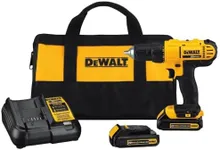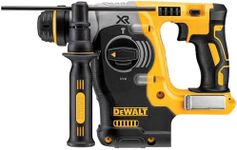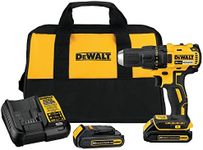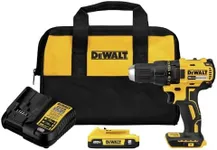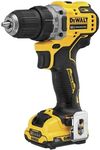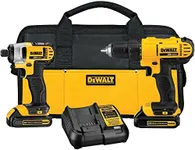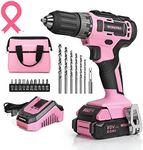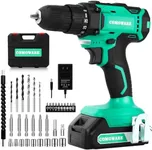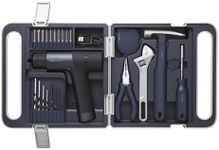Buying Guide for the Best Dewalt Cordless Drills
When choosing a cordless drill, it's important to consider your specific needs and the types of projects you'll be working on. Cordless drills offer the convenience of portability and ease of use without the hassle of cords. However, there are several key specifications to consider to ensure you select the best drill for your tasks. Understanding these specs will help you make an informed decision and get the most out of your purchase.Battery VoltageBattery voltage determines the power of the drill. Higher voltage means more power, which is important for heavy-duty tasks. Cordless drills typically range from 12V to 20V. For light tasks like assembling furniture or drilling into softwood, a 12V drill is sufficient. For more demanding tasks like drilling into hardwood or metal, a 18V or 20V drill is better suited. Choose a voltage based on the intensity of the tasks you plan to undertake.
Battery TypeThe type of battery affects the drill's performance and longevity. Lithium-ion batteries are the most common and preferred due to their longer lifespan, lighter weight, and faster charging times compared to older NiCad batteries. If you need a drill that is reliable and efficient, opt for one with a lithium-ion battery.
Chuck SizeThe chuck size determines the maximum diameter of the drill bit that the drill can accommodate. Common sizes are 3/8 inch and 1/2 inch. A 3/8 inch chuck is suitable for most household tasks and light-duty work, while a 1/2 inch chuck is better for heavy-duty tasks and larger drill bits. Consider the types of projects you'll be working on to choose the appropriate chuck size.
Speed SettingsCordless drills come with variable speed settings, usually measured in RPM (revolutions per minute). Lower speeds are ideal for driving screws, while higher speeds are better for drilling holes. Some drills offer two-speed settings, while others have more. If you need versatility for different tasks, look for a drill with multiple speed settings.
TorqueTorque is the twisting force that the drill can apply. Higher torque is important for driving screws into tough materials. Drills with adjustable torque settings allow you to control the amount of force applied, which is useful for preventing overdriving screws or damaging materials. If you work with a variety of materials, a drill with adjustable torque settings is beneficial.
Weight and ErgonomicsThe weight and design of the drill affect how comfortable it is to use, especially for extended periods. Lighter drills are easier to handle and reduce fatigue, while ergonomic designs with comfortable grips improve control and comfort. If you plan to use the drill frequently or for long durations, prioritize a lightweight and ergonomically designed model.
Additional FeaturesSome cordless drills come with additional features like built-in LED lights, belt clips, or carrying cases. LED lights are useful for working in low-light conditions, while belt clips and carrying cases add convenience for portability and storage. Consider which additional features will enhance your user experience and make your tasks easier.
